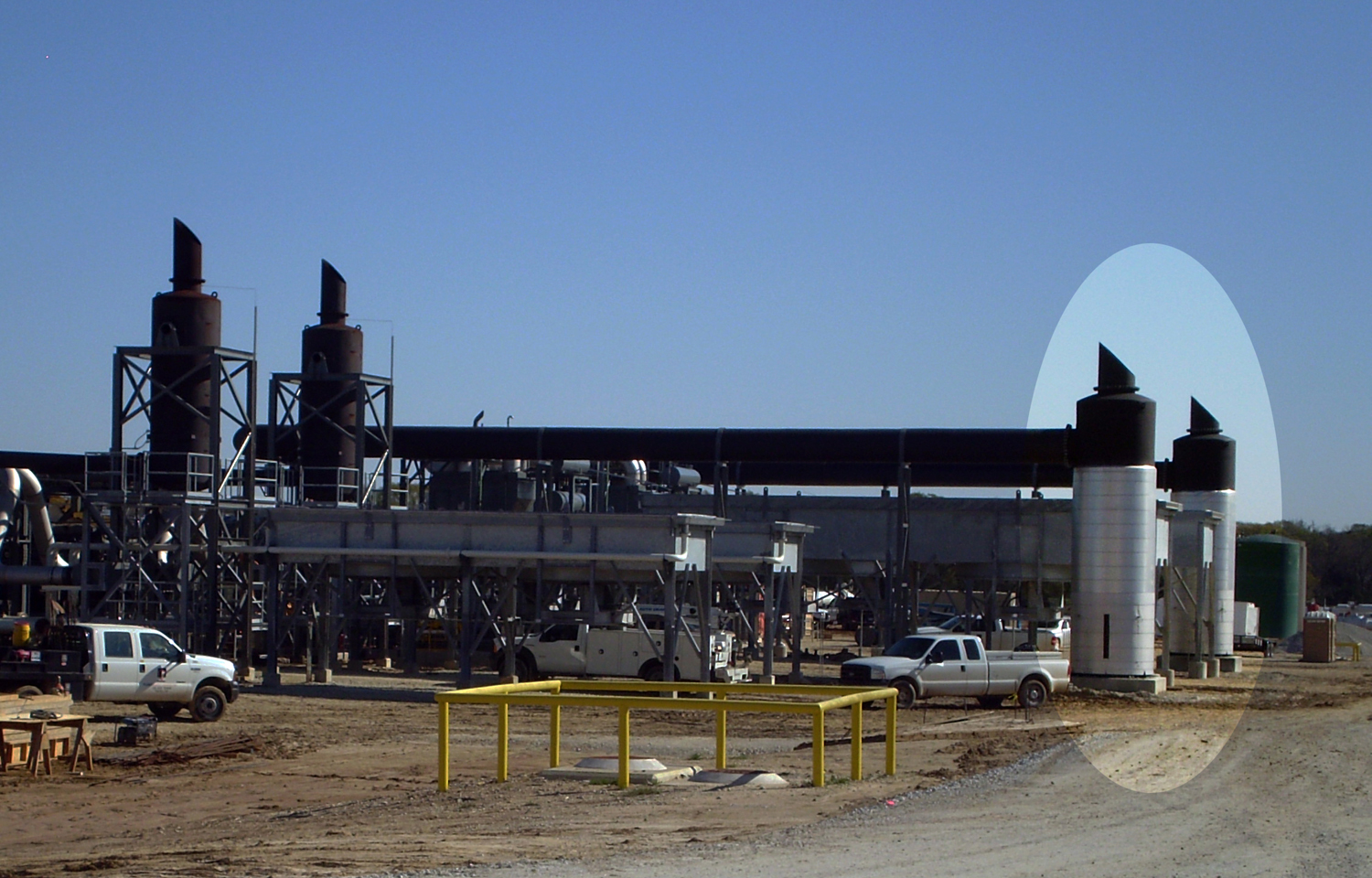June 2010 Vol. 237 No. 6
What's New
New Combination Catalytic Converter/Silencer Designed For Easy Ground-Level Access

Operators of large, lean-burn natural gas or diesel engines – 2,000-10,000 hp, used in gas compression, power generation and other applications – now have an innovative option that combines state-of-the-art emissions reduction with a design that aims to dramatically cut maintenance labor and risks. It is the MIRATECH Ground Access catalytic converter-silencer combo.
Operator-Friendly – From The Ground Up
Operators first notice about the unit its freestanding, vertical configuration. Base-mounted and custom-engineered to meet wind load and seismic rating requirements, the self-supporting structure is equipped with slide-in tracks for fast, easy catalyst element insertion and removal – at ground-level.
“With conventional catalytic converters installed on top of gas compression units or other systems driven by these big engines, you’d have to climb as high as 20 or 30 feet on scaffolding or ladders to service the converters. The Ground Access unit means you can say goodbye to all that. You can perform all maintenance right on the ground: no ladders, no scaffolds, no climbing,” said Terry Allen, of Houston-based SEC Energy Products and Services (SEC-EP), which has installed 18 at gas compression stations in central Texas. SEC-EP has several more installations under way in Arkansas.
Allen added the observation that Ground Access not only makes maintenance faster and easier, it also makes it safer. “Catalyst elements for the large converters required by these engines are heavy – and when the engine has been running both the elements and the conventional unit housing can be very hot.
“With the Ground Access unit, you don’t have to juggle heavy catalyst elements high up off the ground. You simply insert or remove the elements on slide-in tracks, standing right on the ground. Plus, the Ground Access housing designs we use are specially insulated to retain catalyst heat, and that further reduces the risk of injury to your maintenance workers,” he said.
Eliminating the need for stands, ladders and platforms, the self-supporting units also improve overall site aesthetics by cutting down on structural clutter – and they reduce installation cost as well as the installed footprint, said MIRATECH Vice President of Sales & Service David Zenthoefer.
Superior Performance – By Design
The innovation only starts with what you can see on the outside, Zenthoefer said. Inside, the unit features the MIRATECH VORTEX catalyst, delivering superior catalyst performance and durability. The key: a unique design that ensures turbulent exhaust gas flow within the catalyst.
“For any catalyst element to do its job – breaking down regulated pollutants like carbon monoxide, hydrocarbons, EPA-listed hazardous air pollutants, and volatile organic compounds, into harmless gases and water – engine exhaust has to come into contact with the catalyst material,” he explained.
“In a traditional ‘straight channel’ catalyst element, most exhaust gasses pass through the element in an orderly ‘laminar’ flow – and only the perimeter gas in each channel contacts the active catalyst. After the first inch of flow into the element, the perimeter gas reactions are complete, leaving the majority of the flow in the center of the channel insulated from contact with the active catalyst; it simply passes through without any reaction.
“In our VORTEX substrate,” he continued, “channels formed by offset corrugations create turbulent gas flow. That forces more exhaust to come into contact with the catalyst material for better pollutant breakdown – and the element’s open-face design keeps exhaust backpressure low for better engine performance.”
As an added benefit, contact points between offset corrugations in the VORTEX design are resistance-welded throughout the catalyst element for superior strength and durability. “With its through-and-through structural integrity, this simply stands up better to the stresses and pressures of catalytic converter operation,” Zenthoefer said – adding that this built-in strength allows MIRATECH to back VORTEX with a full two-year warranty.
Fully Integrated Noise Reduction
The unit can be designed to remain within even the most stringent noise limits for a facility by maximizing dynamic insertion loss noise reduction – the difference between sound power or intensity levels measured before and after the insertion of a silencer – and minimizing radiant shell noise, as necessary, Allen of SEP-EP said.
Noise levels with large industrial engines are a growing concern almost everywhere, but separate, add-on engine silencers can interfere with a catalytic converter, Allen added. “Some operators have seen silencers installed upstream of the catalytic converter blow noise damping materials like fiberglass into the converter. That can cause catastrophic damage to the converter, the engine, or both.. With MIRATECH Ground Access combo units, that’s not a concern. Silencing is built into the unit in one fully integrated compliance package. You don’t have to worry about your silencer fouling up your emissions control system,” Allen said.
Real-World Performance
The Ground Access units have met and exceeded the toughest regulatory requirements for both emissions and sound, Allen added. “Staying within these limits is a growing challenge. In some places, state and local regulations are even stricter than the federal regs. But these Ground Access units have actually exceeded some of the nation’s toughest compliance requirements. That gives operators a little breathing room as regulators continue to raise the bar.”
Since the Ground Access design’s unveiling last year, more than 40 units have been installed with high-horsepower Caterpillar 3612, 3616 and CM Series engines, Zenthoefer said – and MIRATECH expects increasing orders as word spreads about the unit’s benefits.





Comments